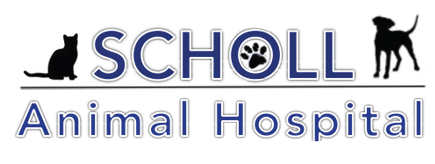 The warmer weather is just around the corner but so are 2 nocturnal creatures, the skunk and porcupine. These animals pose a threat to our pets. Skunk spray can be harmful depending on where our pets are sprayed, but porcupines have a more serious weapon, their quills.
The warmer weather is just around the corner but so are 2 nocturnal creatures, the skunk and porcupine. These animals pose a threat to our pets. Skunk spray can be harmful depending on where our pets are sprayed, but porcupines have a more serious weapon, their quills.
Skunks by nature are a docile creature but will defend themselves. Initially a skunk will hiss, stamp its feet and raise its tail as a warning and when these warning signs are ignored the skunk will spray their anal sac secretions. These secretions contain a mixture of sulfur containing thiols which give the characteristic odour of rotten eggs, garlic and burnt rubber. This foul smelling spray is meant to ward off predators. Skunks can spray these secretions up to 7-15 ft and have very accurate aim. Getting sprayed by a skunk is commonly referred to as being “skunked”.
Most times our pets are sprayed on their faces causing them to rub their faces, roll, sneeze and sometimes vomit. Occasionally, the spray makes contact with the pets eyes causing ocular edema (swelling), conjunctivitis and corneal ulcers which requires veterinary attention.
Treatment is aimed at converting the thiols, which are not water soluble into nonodourous compounds. Bathing dogs and cats in a mixture of baking soda and hydrogen peroxide will accomplish this ( see attached recipe ).
Krebaum skunk odour removal formula
1 quart fresh 3% hydrogen peroxide
1/4 cup baking soda
1-2 tsp of liquid dish washing detergents
For large dogs, add 1 quart of tepid water to ensure complete coverage. Mix the above ingredients together. Bathe the animals outdoors. Apply the formula to the pet, working deeply into the fur and allow it to set for 5 minutes. Rinse with a large amount of water. Repeat if necessary.
Dangers of the porcupine to follow in next blog


 Fleas: There are more than 1900 flea species worldwide but only 1 species is of concern in companion animal medicine. Ctenocephalides Felis, the cat flea, is the most common flea found on our cats and dogs. Successful control of a flea problem requires understanding the flea life cycle.
Fleas: There are more than 1900 flea species worldwide but only 1 species is of concern in companion animal medicine. Ctenocephalides Felis, the cat flea, is the most common flea found on our cats and dogs. Successful control of a flea problem requires understanding the flea life cycle. The extended Scholl Animal Hospital family has grown again with the addition of Mya, a yellow Labrador Retriever puppy. Recently Mya has been visiting the clinic, where she has encountered Marlo, as well as other staff members. These are the types of social interactions that will help to shape her future behaviour.
The extended Scholl Animal Hospital family has grown again with the addition of Mya, a yellow Labrador Retriever puppy. Recently Mya has been visiting the clinic, where she has encountered Marlo, as well as other staff members. These are the types of social interactions that will help to shape her future behaviour.
